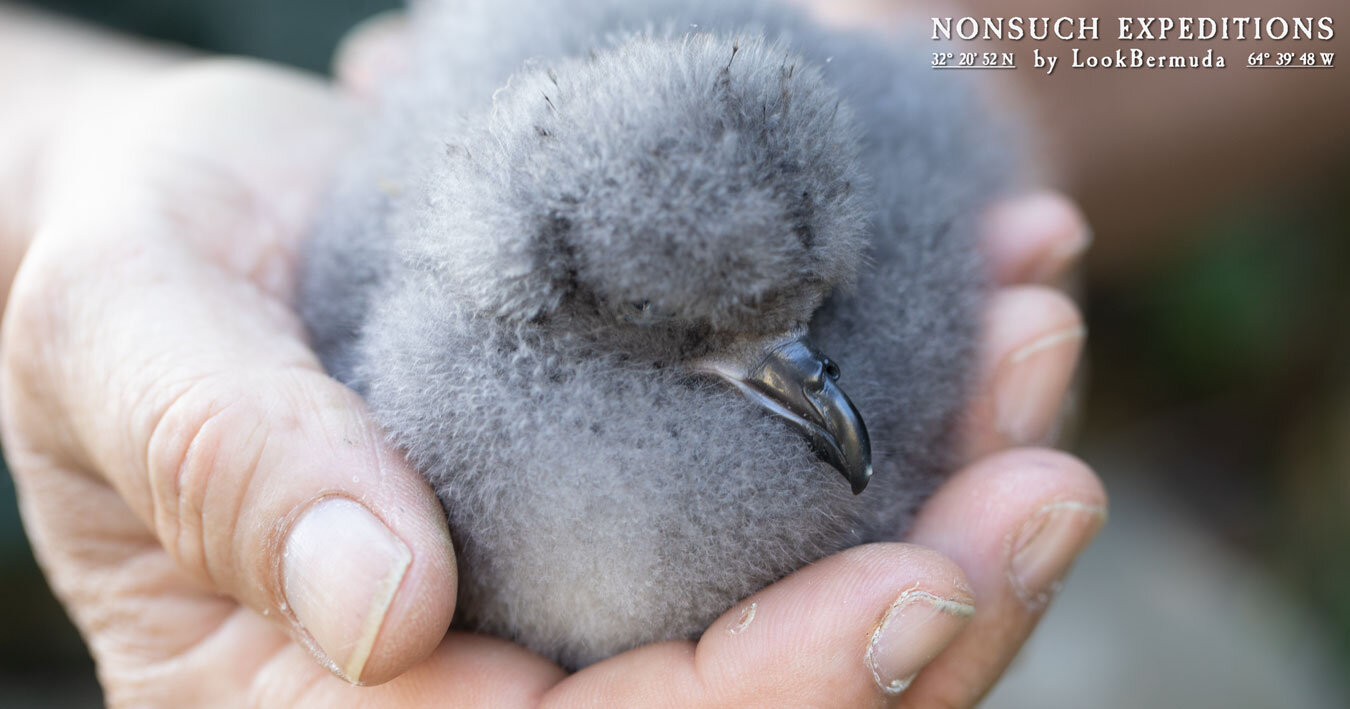Keep watching CahowCam 2 where the egg is expected to hatch in the next few days!
The last few days of February saw a record number of early Cahow chick hatchings, with at least 15 chicks having been confirmed as hatching on the Castle Harbour Nesting Islands by the 28th of February. Normally, only 3 to 5 chicks hatch by this date, so things seem to be ahead of schedule with the Cahow breeding season. Much the same is also true with Bermuda's breeding population of White-tailed Tropicbirds, or Longtails as they are universally known in Bermuda, with literally hundreds of them visiting nest sites in the Castle Harbour Islands and elsewhere in Bermuda during the last week of February. For example, on Thursday 25th February, when I visited Nonsuch Island, 5 of the 6 artificial Tropicbird nests along the stairway leading up from the dock had Adult Tropicbirds peering warily at me from the nest entrances! In a normal year, Tropicbirds are not normally visiting nests until mid to late March, so things are definitely running early with both species.
This has had the effect of having to rush to finish re-installing the entrance baffles on all Cahow nests that prevent the more aggressive Tropicbirds; from invading and taking over the nests, and killing the chicks. In the earliest years of the Cahow recovery program, almost 75% of Cahow chicks were being killed by Tropicbirds during nest invasions. Since the baffles were developed, with specially sized entrances that allow the slightly smaller Cahows to enter but keep the larger Tropicbirds out, there have been almost no chick deaths due to this cause. These baffles are taken out during the first stage of the breeding season, when the Tropicbirds are still out at sea, to make it easier for returning young Cahows to prospect for and find nests, and also to allow the female birds carrying large eggs on the verge of laying to enter the nests without restriction.
Last week, we were able to confirm what we had suspected for some time, that the egg in the CahowCam 1 nest on Nonsuch Island had failed and will not be hatching this year. Although this may be upsetting for some people, most pairs of Cahows only successfully produce chicks every other year, so as this pair did successfully produce a chick (named "Nemo") in 2020, they are about average in their breeding success rate. At present, the egg being incubated in the CahowCam 2 nest is fertile and developing well, and should hopefully be hatching in the next 7-10 days. On Friday 5th March, I finished installing the entrance baffles, after which I carried out quick nest checks on Nonsuch Island and a couple of the other nesting islands. I was overjoyed to record 9 Cahow chicks already having hatched at the "A" Cahow nesting colony on Nonsuch, with several more eggs still being incubated by adult birds. (I did not have time to check the second, "B" colony site on Nonsuch, so we may also have 1 or 2 chicks there as well).
Overall, almost 30 chicks have already hatched on all nesting islands, so in the next two weeks, as hatching continues, we should know the total number of Cahow chicks produced this year by the breeding population. At the moment, it looks like there is still a good chance of beating the record of 73 successfully fledged chicks produced in 2019.
Jeremy Madeiros | Principle Scientist - Terrestrial Conservation |Dept. of Environment and Natural Resources


